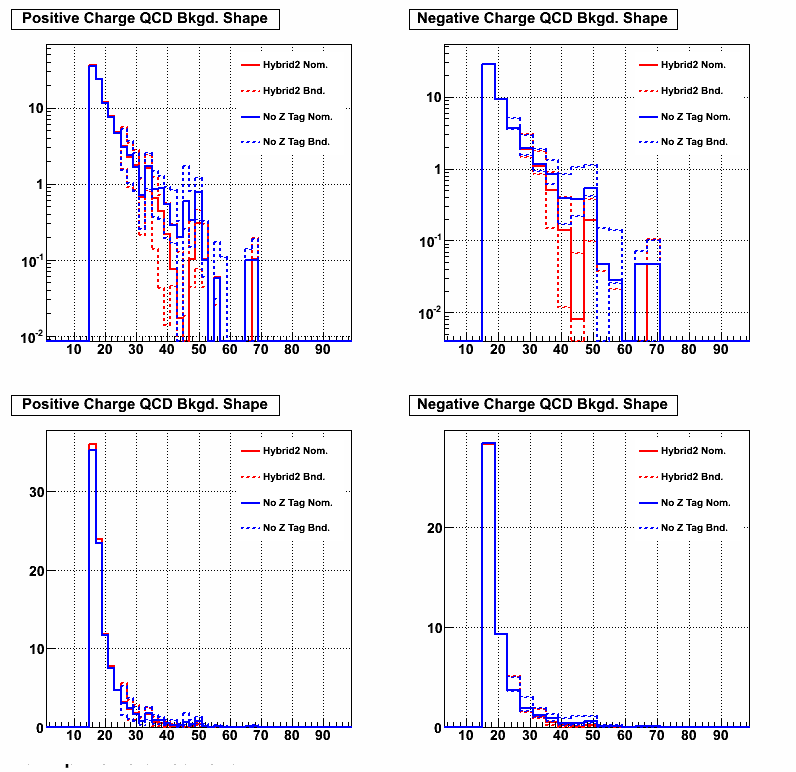- seelej's home page
- Posts
- 2011
- 2010
- December (2)
- November (3)
- October (3)
- September (3)
- June (2)
- May (3)
- April (2)
- February (9)
- January (1)
- 2009
- December (1)
- October (3)
- September (4)
- August (1)
- July (1)
- June (6)
- May (1)
- April (4)
- March (5)
- February (1)
- January (4)
- 2008
- My blog
- Post new blog entry
- All blogs
Comparison of QCD Background Shape with 2 Methods of Z Background Subtraction
Justin Stevens explored a number of different schemes aimed at rejecting Z background from the data-driven QCD sample used to estimate a shape for the QCD background (link). The hybrid2 scheme performed the best at rejecting the Z background in the data-driven QCD background sample. There is still a worry of a residual bias in the scheme that would cause a noticeably different QCD background shape. To test this I calculated the QCD background shape, which subtracting the remaining MC estimate of the Z background from the raw QCD spectrum, and looked for deviations from the nominal sample where no explicit Z background was performed and the MC estimate was used to subtract any Z contamination. Below you can see the results. The "Nom" refers to the best shape and the systematic uncertainty bands are plotted as "Bnd". The charges are separated, even though they are nominally the same shape. The data is also plotted linearly and logarithmically so you can see the difference and also the impact of the difference. Basically, it appears that both methods are within the systematic uncertainty of the other so it would appear that the method is reasonably robust and the use of either scheme (hybrid2 or noZTag) is warranted.

- seelej's blog
- Login or register to post comments
